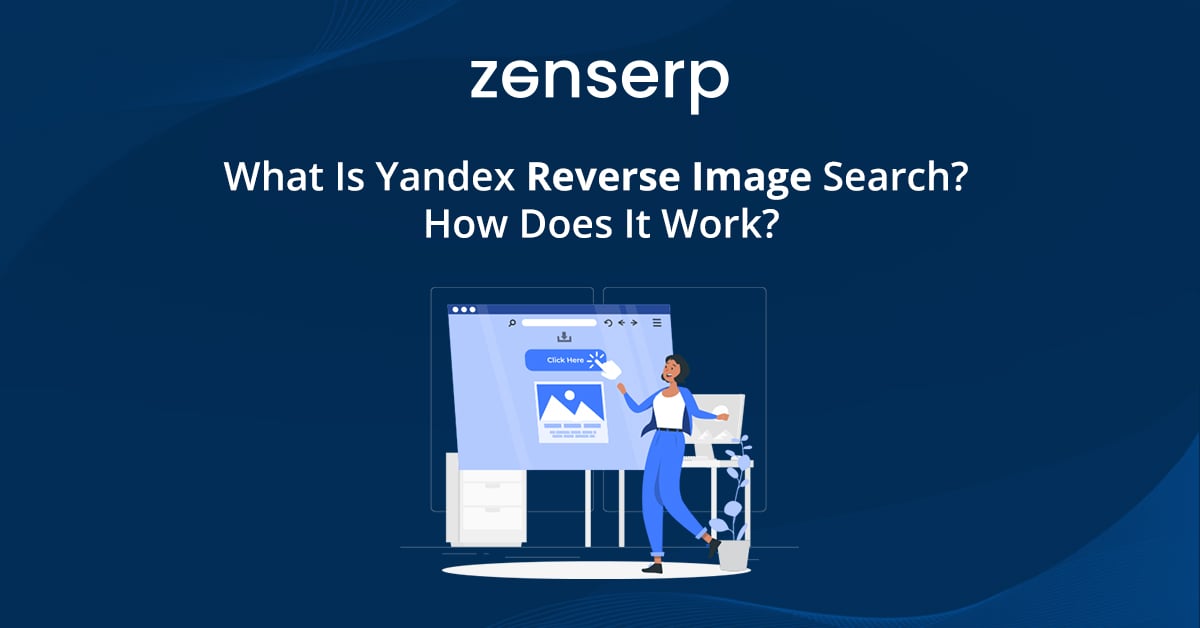
Unveiling Yandex Reverse Image Search: A Comprehensive Guide
In an era dominated by visual content, the ability to quickly and accurately identify the source and context of an image is invaluable. Yandex Reverse Image Search provides a powerful tool for achieving this, offering capabilities that extend beyond simple image identification. This article delves into the intricacies of Yandex Reverse Image Search, exploring its features, applications, and how it compares to other similar services. Whether you’re a journalist verifying sources, a business protecting your brand, or simply a curious internet user, understanding Yandex’s reverse image search can significantly enhance your online research toolkit. We’ll explore the functionalities that make Yandex a compelling option for reverse image lookup.
What is Yandex Reverse Image Search?
Yandex Reverse Image Search, offered by the Russian technology company Yandex, is a search engine feature that allows users to upload an image and find visually similar images or the sources where that image appears online. Unlike traditional search engines that rely on text-based queries, reverse image search uses image analysis algorithms to identify the content and context of a picture. This is particularly useful when you have an image but lack information about it, such as its origin, subject, or related content.
How to Use Yandex Reverse Image Search
Using Yandex Reverse Image Search is a straightforward process. Here’s a step-by-step guide:
- Navigate to Yandex Images: Go to the Yandex Images website (images.yandex.com).
- Locate the Camera Icon: In the search bar, you’ll find a camera icon. Click on it.
- Upload an Image or Paste an Image URL: You have two options: upload an image from your computer or paste the URL of an image found online.
- Initiate the Search: Once the image is uploaded or the URL is pasted, click the search button.
- Review the Results: Yandex will display results, including visually similar images, websites where the image appears, and potentially other related information.
Key Features and Capabilities
Yandex Reverse Image Search boasts several features that make it a powerful tool:
- Visual Similarity Search: Identifies images that are visually similar to the uploaded image, even if they are not identical. This is useful for finding variations of the same image or related images with similar aesthetics.
- Source Identification: Locates websites and pages where the image appears online. This helps in tracking down the original source of an image and understanding its context.
- Object Recognition: Attempts to identify objects and landmarks within the image. This can be helpful for learning more about the content of the picture.
- Image Size Detection: Provides information about the different sizes of the image available online.
- Filtering Options: Allows users to refine their search by specifying parameters such as image size, orientation, and file type.
Applications of Yandex Reverse Image Search
The applications of Yandex Reverse Image Search are diverse and span various fields:
Journalism and Fact-Checking
Journalists can use Yandex Reverse Image Search to verify the authenticity of images and videos used in news reports. By tracing the origin and usage of an image, they can identify manipulated or misattributed content, ensuring the accuracy of their reporting. [See also: Advanced Techniques for Fact-Checking Online Content]
Brand Protection
Businesses can monitor the use of their logos and copyrighted images online. Yandex Reverse Image Search helps identify unauthorized use of their visual assets, enabling them to take appropriate action to protect their brand and intellectual property.
E-commerce
Consumers can use Yandex Reverse Image Search to find products similar to an item they have seen in a picture but don’t know where to buy. This is particularly useful for fashion items, furniture, and other visually-driven products.
Genealogy and Historical Research
Researchers can use Yandex Reverse Image Search to identify people, places, and events depicted in old photographs. This can aid in genealogical research and historical investigations.
Travel Planning
Travelers can upload images of landmarks or destinations to find more information about them, including their location, history, and nearby attractions. This can enhance their travel planning and provide valuable insights before visiting a new place.
Identifying Fake Profiles
Online daters and social media users can use Yandex Reverse Image Search to verify the authenticity of profile pictures. This can help identify fake profiles and protect against scams and identity theft.
Yandex Reverse Image Search vs. Other Similar Services
While Yandex Reverse Image Search is a powerful tool, it’s not the only option available. Google Images, TinEye, and Bing Visual Search also offer reverse image search capabilities. Here’s a brief comparison:
- Google Images: Widely used and generally provides comprehensive results. It excels at identifying similar images and finding websites where the image appears.
- TinEye: Specializes in finding the original source of an image and tracking its usage online. It’s particularly useful for copyright enforcement and identifying image theft.
- Bing Visual Search: Offers a visually appealing interface and provides detailed information about the objects and landmarks within an image. It also integrates with other Microsoft services.
- Yandex Reverse Image Search: Often provides results that other search engines miss, particularly for images popular in Eastern European countries or those with Cyrillic text. It also has strong object recognition capabilities.
The best choice depends on the specific needs of the user. For general searches, Google Images is often a good starting point. For tracking image usage and enforcing copyright, TinEye is a better option. Yandex Reverse Image Search shines when dealing with images from specific regions or when object recognition is crucial. Using Yandex reverse image search can sometimes uncover information that other search engines overlook.
Tips for Effective Yandex Reverse Image Search
To get the most out of Yandex Reverse Image Search, consider these tips:
- Use High-Quality Images: The better the quality of the uploaded image, the more accurate the results will be.
- Crop the Image: If you’re only interested in a specific part of the image, crop it before uploading. This will focus the search on the relevant area.
- Try Different Images: If you’re not getting the results you want, try using different images of the same subject. Variations in lighting, angle, and composition can affect the search results.
- Combine with Other Search Techniques: Use Yandex Reverse Image Search in conjunction with other search techniques, such as keyword searches and social media investigations, for a more comprehensive understanding.
- Consider Regional Differences: Be aware that Yandex may prioritize results from Russian and Eastern European sources. Adjust your search strategy accordingly if you’re looking for information from other regions.
Limitations and Considerations
Like any tool, Yandex Reverse Image Search has its limitations:
- Accuracy: The accuracy of the results depends on the quality of the image and the complexity of the content. Some images may be difficult to identify or may yield inaccurate results.
- Privacy: Be mindful of the privacy implications of uploading images to a search engine. Yandex may retain the images for a period of time, so avoid uploading sensitive or personal information.
- Bias: The search results may be influenced by biases in the algorithms and data used by Yandex. Be critical of the results and consider multiple sources of information.
The Future of Reverse Image Search
Reverse image search technology is constantly evolving, driven by advances in artificial intelligence and machine learning. Future developments may include:
- Improved Object Recognition: More accurate and detailed identification of objects and landmarks within images.
- Enhanced Contextual Understanding: Better ability to understand the context and meaning of an image, including its emotional tone and cultural significance.
- Integration with Augmented Reality: Seamless integration of reverse image search with augmented reality applications, allowing users to identify and learn about objects in the real world in real-time.
- Advanced Image Forensics: Tools for detecting manipulated or altered images with greater accuracy and reliability.
Conclusion
Yandex Reverse Image Search is a valuable tool for anyone who needs to identify the source, context, or content of an image. Its features and capabilities make it useful for journalism, brand protection, e-commerce, genealogy, and many other applications. While it’s not without its limitations, Yandex Reverse Image Search offers a powerful way to navigate the visually-rich landscape of the internet. By understanding how to use it effectively and being aware of its limitations, you can leverage this tool to enhance your online research and gain valuable insights. Remember to use Yandex reverse image search responsibly and ethically, respecting privacy and intellectual property rights. Using Yandex reverse image search effectively requires understanding its strengths and weaknesses, allowing you to leverage its capabilities for a variety of tasks.

